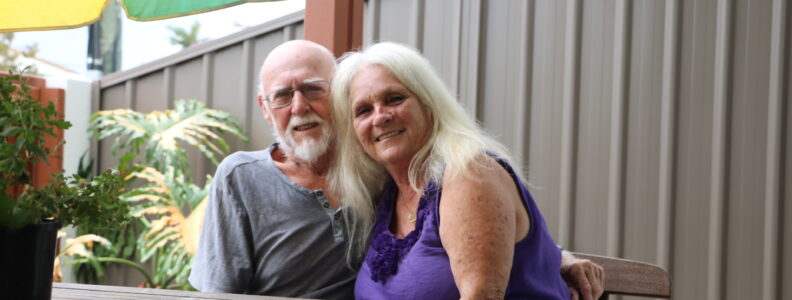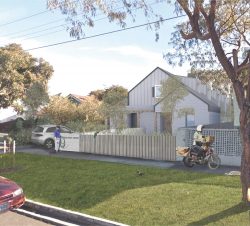Four jurisdictions have now signed up to the new National Housing and Homelessness Agreement (NHHA) but, despite its early promise, there’s barely a mention of community housing in the four bilaterals so far finalised.
The six national housing priorities of the NHHA are social housing, community housing, affordable housing, tenancy reform, supporting home ownership and reform of the planning system.
Specific mention is made in the priorities of community housing strategies that improve the viability and encourage growth of the sector (may include redevelopment and stock transfers). However, there it stops; the four bilateral agreements released to date contain little to support the viability or growth of community housing.
Jurisdictions must produce a housing strategy that indicates the level of housing supply needed to respond to projected demand, outlines the reforms and initiatives that will contribute to meeting this need, includes planned or expected levels of social housing, and set out how the State will contribute to the housing priority policy areas. (Clause 17(a) of the NHHA). Most states and territories are reported to be working on new strategies, with varying levels of consultation.
Jurisdictions will report annually, with public reporting by 31 October of the following year.
While we encourage you to read the agreement in full, here’s what caught our eye:
South Australia
South Australia promises to have a new housing strategy and a new homelessness strategy in place and publicly available by July 1, 2019.
It aims for an adequate supply of land to meet long-term demand and a 30-year plan for Greater Adelaide to deliver a compact urban reform.
Improving the liveability of social housing stock is included, but only via a commitment that 75 per cent of new stock built by the SA Housing Trust will meet Universal Design criteria.
The development and efficiency of CHPs will be supported through finalising the transfer of 5,000 properties, with contractual requirements ‘that support the upgrade and renewal of CHP managed houses’.
Three reviews of current housing pathways/programs are mentioned, including:
• develop contemporary service responses for young people leaving care, with a new protocol between the Department for Child Protection and Housing SA to support young people into independent housing, in 2018.
• new supportive housing for people who have experienced chronic homelessness will be implemented by 2020
• the existing aged housing program (no timeframe).
Tasmania
The bilateral acknowledges the importance of community housing – over 40 per cent of social housing is managed by community housing providers in Tasmania. However, there are no measures in the bilateral targeted at community housing and only two measures specifically for social housing – a commitment to 15 new (hopefully extra) social housing dwellings a year, and $13.6m to upgrade 1,050 public housing dwellings.
The bilateral does provide for 10 rapid rehousing homes a year for people exiting institutions (from 30 June 2019), to avoid exits into homelessness.
The Tassie Government has an aim to keep home ownership at least 5 per cent above the national average, and will maintain its First Home owner grant program and review what government land could be re-purposed to housing.
The Tasmanian Government will continue to produce quarterly reports on progress against the state’s affordable housing action plan.
ACT
According to the bilateral agreement, the ACT has the most targeted public housing portfolio in Australia with housing allocated to those in greatest need. There are 22,000 people in public housing (it omits to mention the further 1,500 in community housing).
The bilateral promises a new ACT Housing Strategy in 2018. It will address legislative requirements and the requirements of clause 17 (a) of the primary housing
Agreement, covering ‘the full housing spectrum, from homelessness, through public
housing and affordable rental and home purchase opportunities’. Sadly, however, no mention of community housing.
The agreement does promise that the ACT will set and publish annual targets for public, community and affordable housing as part of the Indicative Land Release Program.
The existing ACT social housing model will be reviewed ‘to improve viability, identify and develop initiatives to achieve efficiencies and improve stock utilisation’. This is the closest the bilateral agreement comes to addressing community housing.
Like SA, the ACT undertakes to construct public housing dwellings that are built to national liveable design standards, but is silent about any retrofitting of existing social housing stock to meet the standards.
Northern Territory
The Northern Territory bilateral describes its ‘public housing portfolio’ as including community housing.
However the NT is to be congratulated for specifically including measures to develop and implement an urban Community Housing Strategy that identifies ways to support the growth of the NT CHP sector and inform the transfer of 750 urban public dwellings to the sector, as well as construct community housing dwellings in urban centres (by 2023).
The NT will have a new housing strategy in place and publicly available by September 30, 2019.
A review of rent setting models in urban and remote areas will be undertaken by December 2019.
The NT will also consult senior Territorians and those approaching retirement about aged care housing (to identify demand) and provide findings to the private sector to help identify potential opportunities for future private sector development of seniors-appropriate accommodation.
Planning reforms include allowing more scope for providing affordable housing products through
the incorporation of a flexible approach to zoning, including through the use of Specific Use Zones in the NT Planning Scheme, and facilitating land release in remote Aboriginal communities by extending the exemption under the Planning Act (Regulation 3A), which removes the need for subdivision approval for development associated with the $1.1 billion remote housing program.














